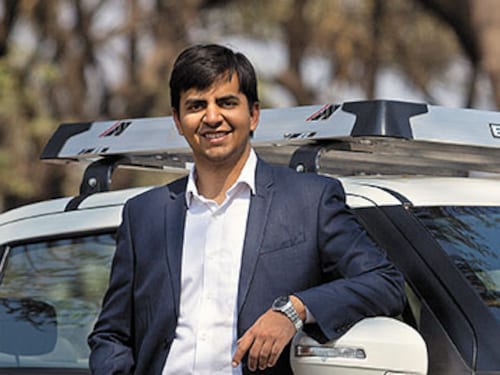Bhavish Aggarwal: Bringing Technology to Fleet Taxis
Bhavish Aggarwal's Olacabs is running smooth on new technology


Bhavish Aggarwal | 28
Co-founder and CEO at Olacabs
CATEGORY: E-COMMERCE
Bhavish Aggarwal is a man of few words. Sample this. “Everybody in IIT Bombay is bright.” “Man, not even my girlfriend knows my GPA. I got married last week.” “I was born in Ludhiana but grew all over the place.” “I always wanted to be an entrepreneur.” Push him for details and he retreats. Maybe he’s shy, maybe not—certainly not when it comes to talking business.
In just two years, Bhavish, 28, has already had a pretty good run with Olacabs. For one, the service is a hit in venture capital (VC) circles, having seen one infusion of angel funding and two rounds of VC funding. And thanks to the monies from Tiger Global and Matrix Partners, Aggarwal has the capital—and the dream—to take what started as a Mumbai-centric idea to build Olacabs into a pan-India company. “Being from IIT and given his computer science degree, he is clearly a smart guy. But he is the most talented entrepreneur I have seen irrespective of age,” says Avnish Bajaj, managing director of Matrix Partners.
It helped that Aggarwal is a man in the right place at the right time. Other than redBus, the transportation sector in India hasn’t seen much innovation in the last five decades, even when the world around it has changed. “There is a huge middle class, rising disposable income, technology... all of this put together can help build a much better experience. We are building technology for this ecosystem,” says Aggarwal. A world away from auto rickshaws and black-and-yellow cabs, if you will.
Was this going on in his head while working at Microsoft Research India? No. At that time, he was hoping to solve some real life society problem. “I wanted to make a big impact and create value,” he says. In a way, he’s got there. Ola, today, has a fleet of 8,000 vehicles (put together with an aggregation model as opposed to ownership) and employs 500-odd people. The company does not share its revenue or profit figures.
While Ola has grown big, Aggarwal says he misses the starting-up days. There were times when he took all the customer calls and even drove a customer to the airport. He has operations people to do that now as he spends most of his time looking at the big picture ideas. What could those be? He mentions “growth” and “policy” intervention. Compared to peers, technology is the support system and his key differentiator today. The devil, instead, will be in the details—reliability, service and customer-driver interaction—and these are what Aggarwal will have to keep in his line of sight.
First Published: Feb 12, 2014, 06:29
Subscribe Now